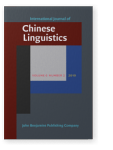Vol. 6:2 (2019) ► pp.221–237
An unaddressed phonological contradiction
There is general agreement on the main features of the process through which the phonology of modern standard Chinese has evolved over three millennia from that of Old Chinese. However, according to general linguistic theory, that phonological history is impossible: the theory claims that no human language can evolve in the manner in which Chinese is believed to have evolved. Furthermore, this particular strand of general linguistic theory has recently been corroborated through stringent statistical testing. Thus there is a glaring contradiction between two areas of scholarship, and to date there has been little recognition by the scholarly community of the need to resolve this contradiction, indeed little willingness to admit its existence. I argue that the contradiction is real and serious, and needs resolution.
Article outline
- 1.A paradoxical history
- 2.Mergers and splits
- 3.Statistical tendency versus absolute rule
- 4.Chinese-specific paradox resolutions
- 5.Questionable data
- 6.Noisy data no problem?
- 7.Potential falsifiers
- 8.A call to arms
- Notes
-
References
